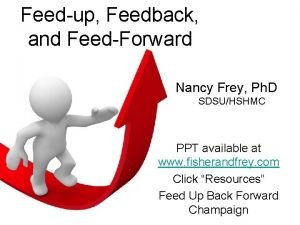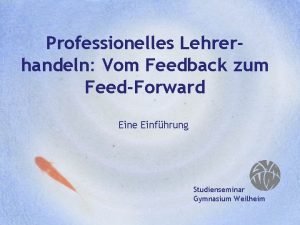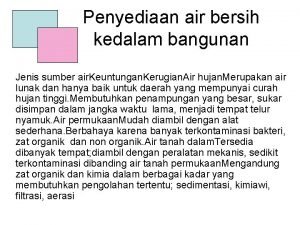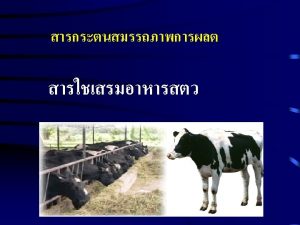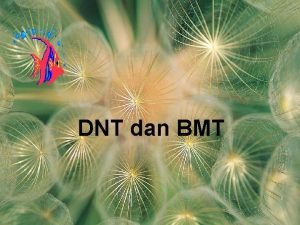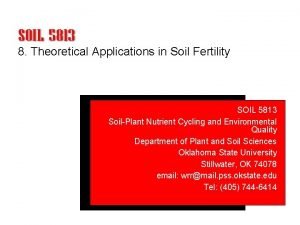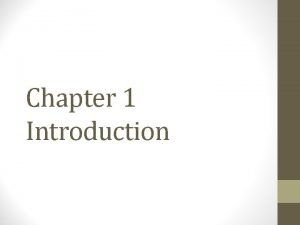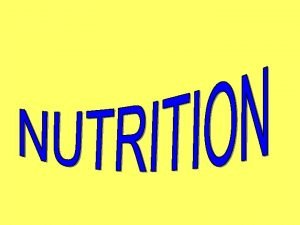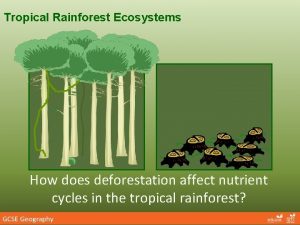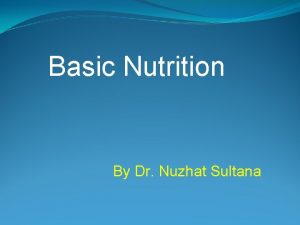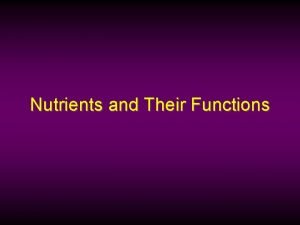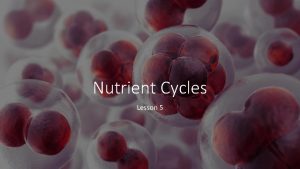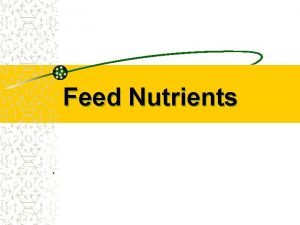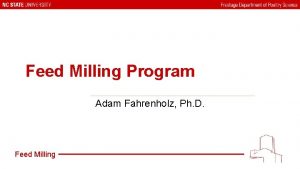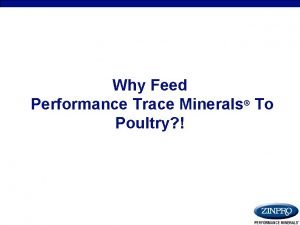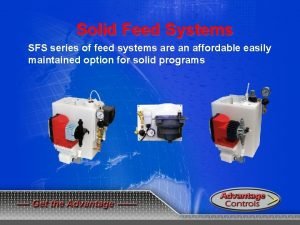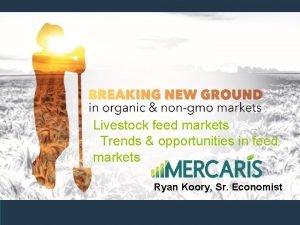Feed Nutrients What is a Nutrient 2 A











- Slides: 11

Feed Nutrients

What is a Nutrient? 2 �A chemical compound or element that aides in the support of life �Nutrients are needed for cells to grow, divide, live, and function properly! 9/10/2020

What is a Nutrient? 3 �Different kinds of nutrients are needed by animals �Nutrient requirements vary by species, age, production level �Nutrients must be balanced in order to provide the most benefits to the animal 9/10/2020

5 Classifications of Nutrients 4 �Energy Nutrients (Carbohydrates, fats, and oils) �Protein �Vitamins �Minerals �Water 9/10/2020

Energy Nutrients 5 �Carbohydrates Made of sugars, starches, cellulose, and lignin The body burns carbohydrates for energy for its cells � Extra carbohydrates are stored as fat in the body Releases heat which keeps the body warm! Allow energy for: � Heartbeats � Walking � Breathing � Digestive contractions 9/10/2020

Energy Nutrients 6 �Carbohydrates are classified as two types: Simple � Sugars and starches � Easily digested � Cereal grains (Corn, Wheat, Rye, Barley, Oats) Complex � Fiber – composed of cellulose and lignin � More difficult to digest � Roughages (Alfalfa, Bromegrass, Hay, Orchard Grass) 9/10/2020

Energy Nutrients 7 �Fats and Oils Provide more energy than carbohydrates to animals � 2. 25 times as much energy is available � Easily digested � Carry fat soluble vitamins Fats are solid at body temperature Oils are liquid at body temperature Sources of Fats/Oils: Cereal Grains, rendered animal fat, Oilseeds 9/10/2020

Protein 8 �Organic compounds made up of amino acids Used to build body tissue, as well as horns, hooves, hair, internal organs, and skin. Essential for pregnant animals Sources of Protein: Urea, soybean meal, cotton seed meal, linseed meal, meat meal, fish meal, whey, dried milk 9/10/2020

Vitamins 9 �Trace organic compounds – needed in small amounts only �Two groups: Fat Soluble: A, D, E, and K � Help with healthy eyes, conception rate, and disease resistance Water Soluble: C and B-Complex � Helps with teeth and bone formation, increased energy, increased appetite, growth, and reproduction Sources of Vitamins: Green leafy hay, milk, cod liver oil, fish soluble, certain animal proteins 9/10/2020

Minerals 10 �Inorganic materials needed in trace amounts Provide for bone growth, teeth, and tissue, aid in muscular activities, repair of body tissue, digestion of feed, other body processes, immunity to diseases � Sources: Mineral blocks or milled into feeds � Two types Macro minerals – Needed in larger amounts • Sodium, chlorine, calcium, phosphorus Micro minerals – Needed in smaller amounts • Iron, iodine, sulfur, magnesium, iodine, copper, cobalt, zinc, boron, manganese, selenium, and fluorine 9/10/2020

Water 11 �Water makes up the largest mass of living organisms Amount of water needed varies by animal 40 -80% of an animals body is water Functions: � Controls temperature � Dissolves nutrients � Acts as a carrier in blood for nutrients � Certain chemical reactions in the body 9/10/2020
